A better tomorrow
Botanical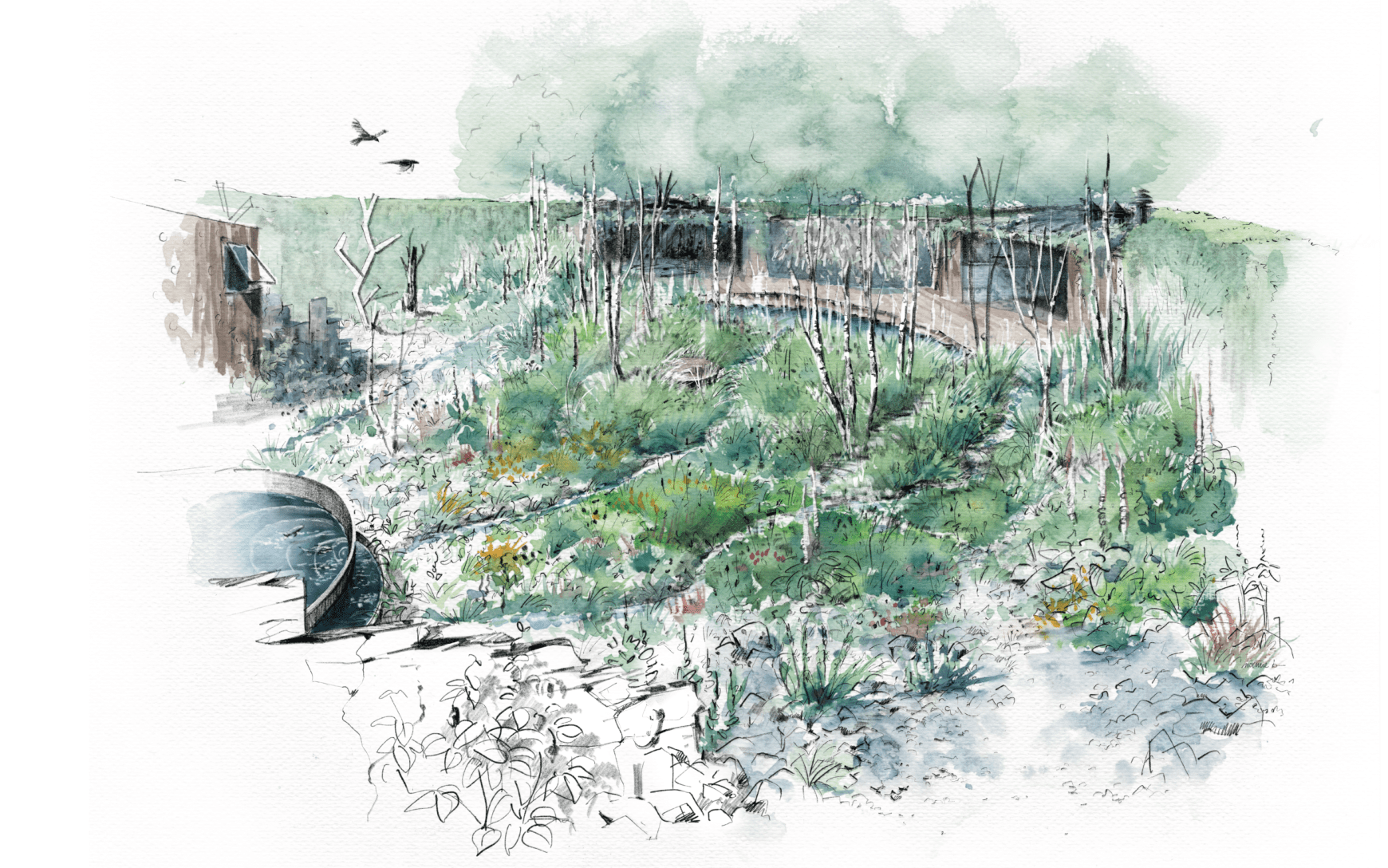
Every year, the International Garden Festival at the Domaine de Chaumont-sur-Loire invites landscape designers from all four corners of the world to dream up ideas for a garden that reflects a given theme. In order to be selected, a project must be “a cocktail of imagination, knowledge and craftsmanship”, according to the festival’s director Chantal Colleu-Dumond.
This year, Fabien Caumont has the honor of bringing his design to life in one of the 24 parcels nestled behind the majestic Chaumont Castle. The festival is open to the public from 25 April to 5 November, which allows visitors to marvel at the gardens’ beauty through the passing seasons.
The festival’s organizers chose “the resilient garden” for this year’s theme, and in order to do it justice, Fabien and Francis Arsène of Atelier Arzinc married their skills and expertise in to prepare an original and ambitious proposal. They both agreed that resilience is not simply a defense mechanism, self-preservation from an external aggression. Rather, it is a journey that is necessary to take to acknowledge and process trauma before being able to move forward towards a better tomorrow.
The garden’s title “A better tomorrow” evokes the kind of radical optimism that they believe is at the heart of resilience. Nature offers us so many beautiful examples of resiliency, from its way of taking root in even the most hostile conditions to how it finds ingenious ways of adapting to its surroundings, unfazed and determined to thrive.
This garden was sponsored by Garden Lab and would not have been possible without the support of Garden26, Verte Ligne Pépinière, O2D environnement, EG. Bois, Fifty Bees, and Rheinzink.
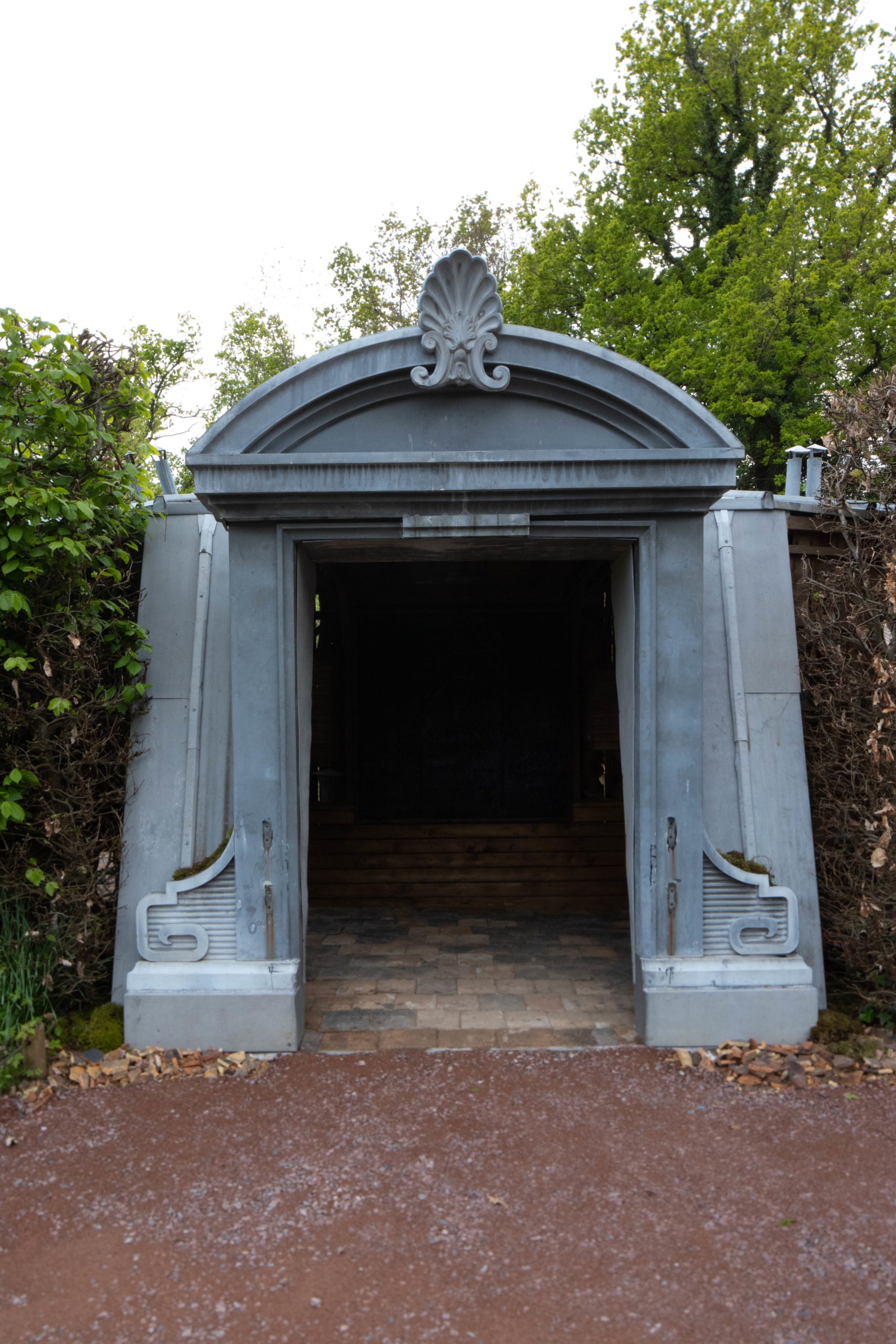
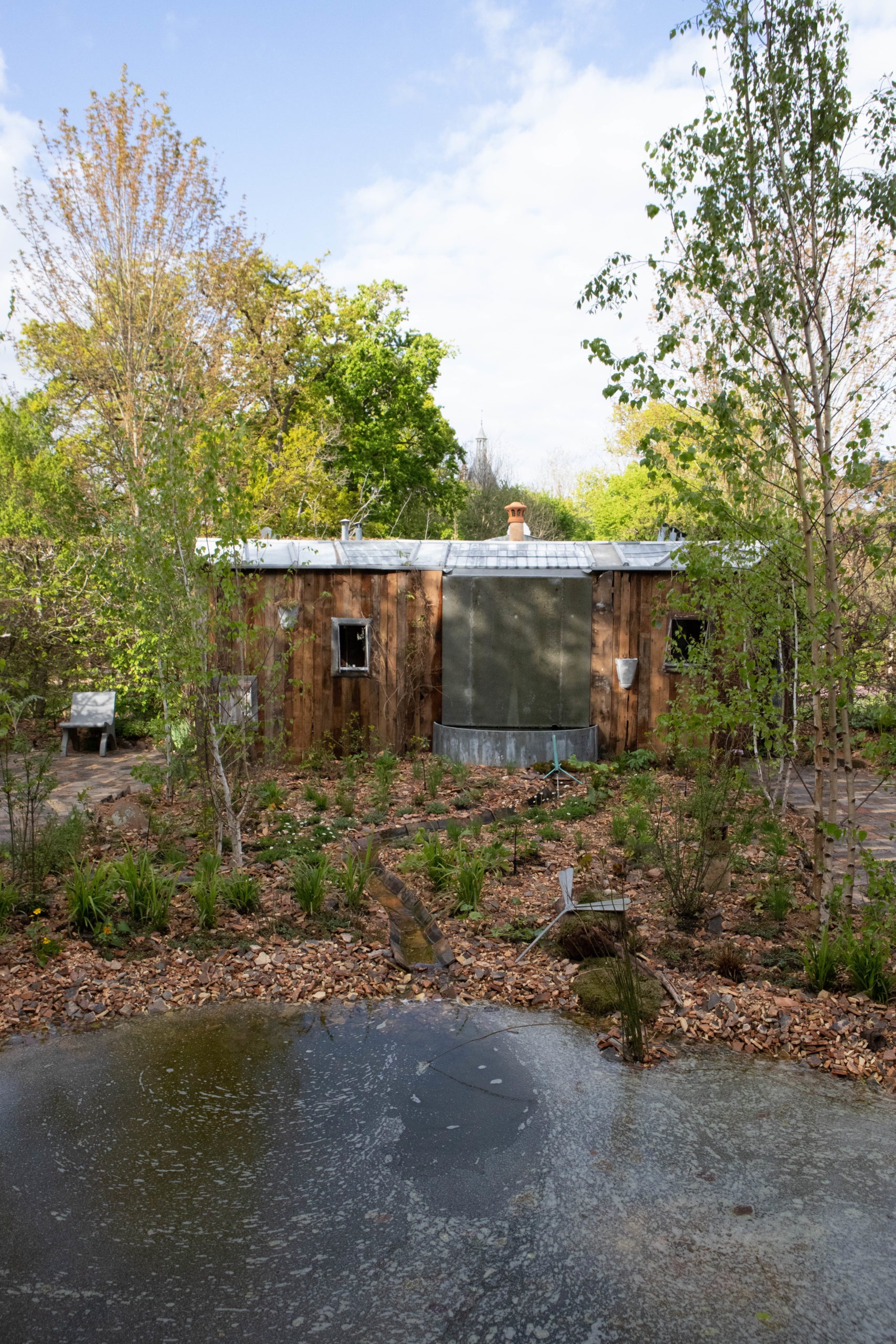

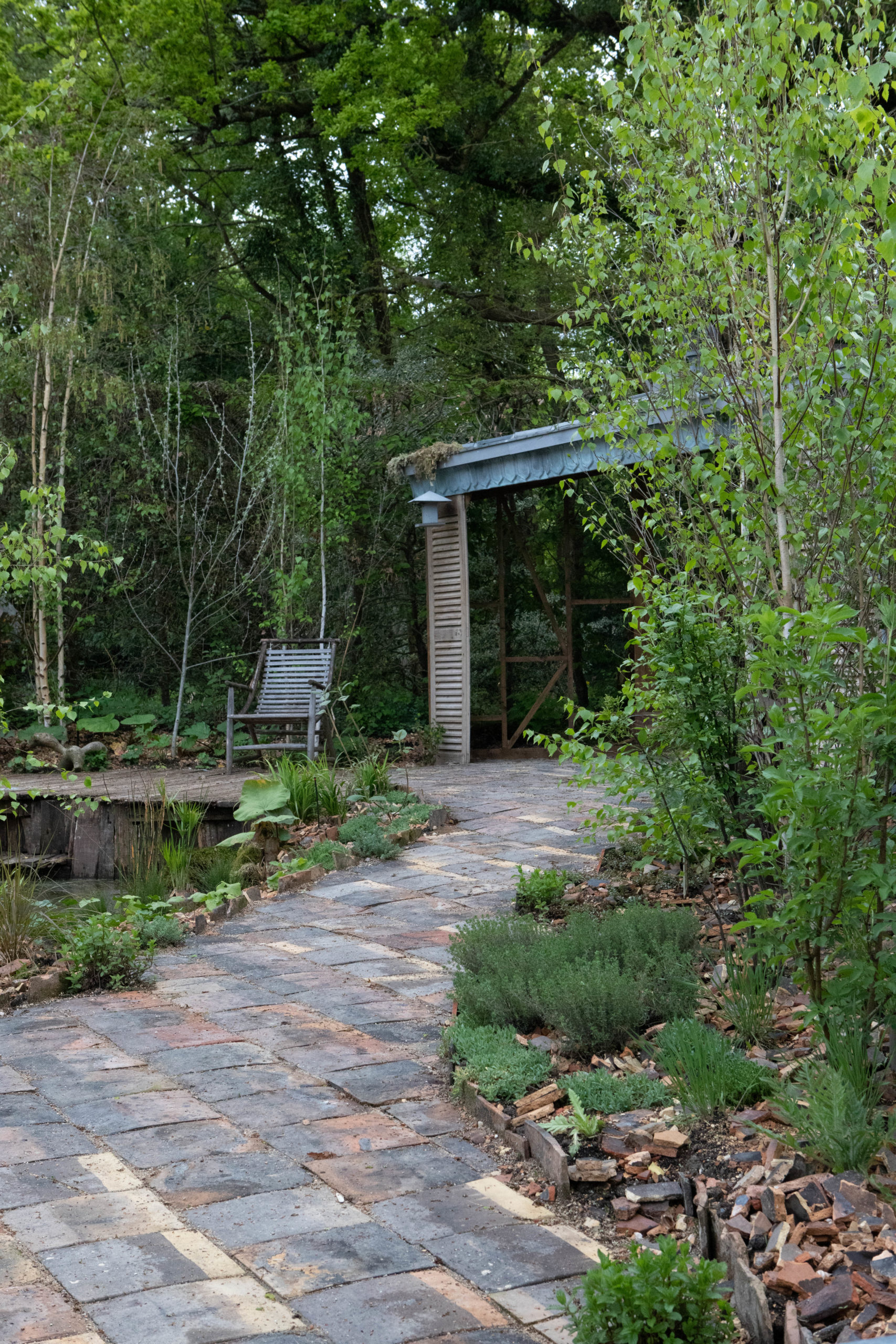
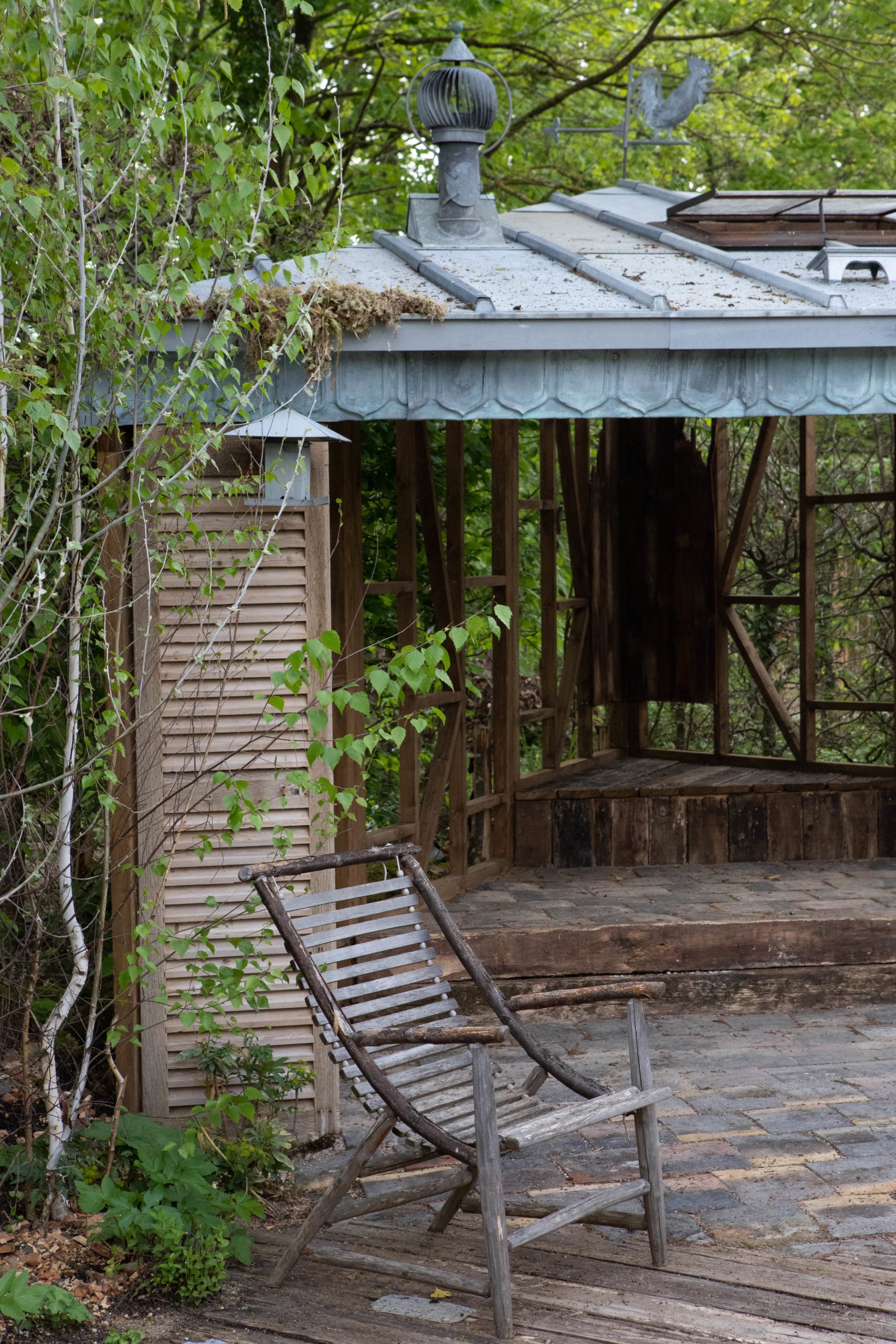
The concept
The garden’s design aims to highlight the parallels between human and plant resilience within an urban context. The book A Tree Grows in Brooklyn served as one of the early inspirations. In the novel, the author compares the social ascension of the main character to the beautiful trees in her neighborhood that stretch towards the sky despite growing in concrete cracks, without soil or water.
Working with Atelier Arzinc, Fabien was able to imagine and transform their garden parcel into an urban environment. This cityscape serves as the starting point for the journey of resilience that the visitor will experience. The garden is divided up into three separate phases that symbolize various stages of spiritual resilience. The goal of the garden is to underline how cities and nature can reach a better state of equilibrium.
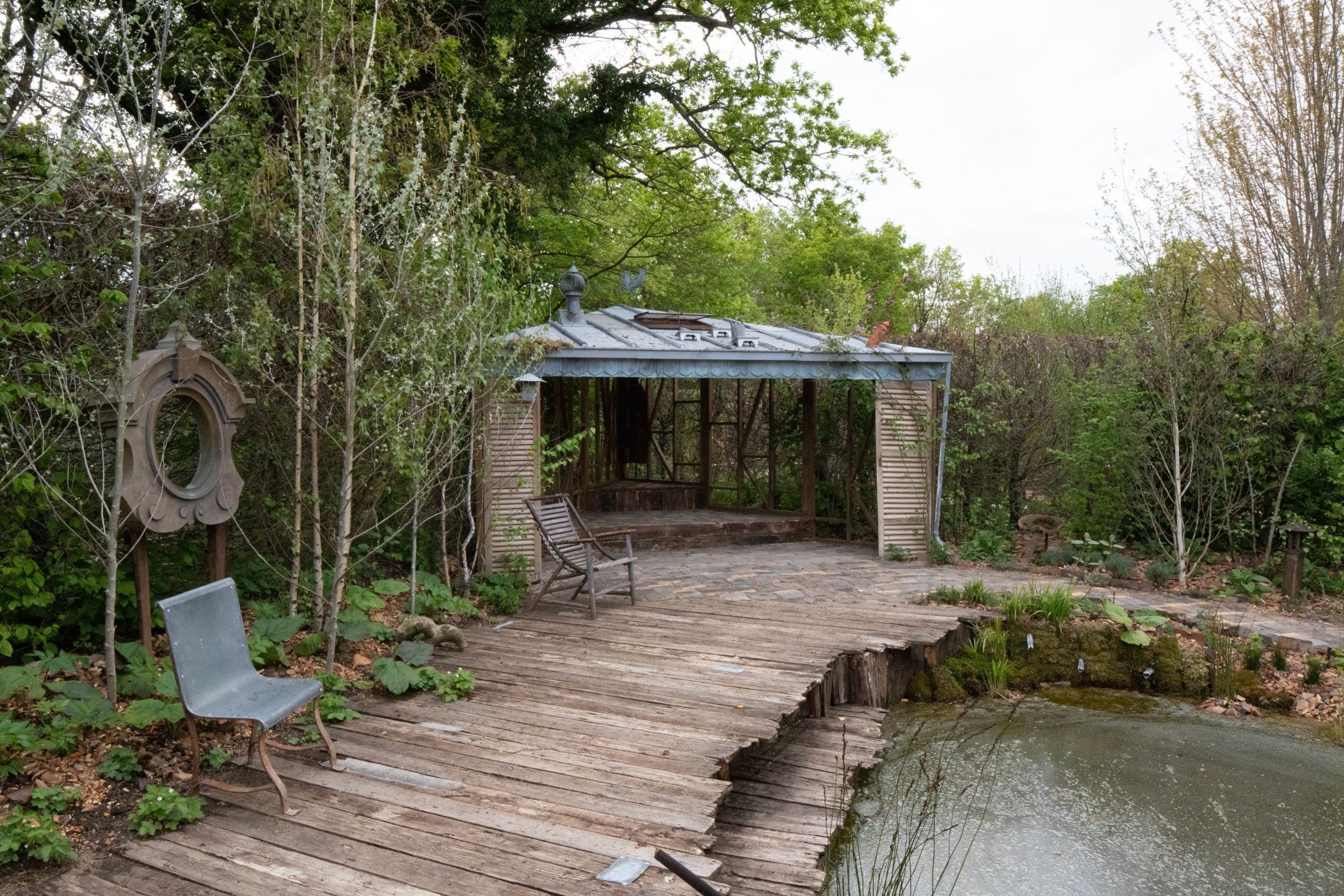
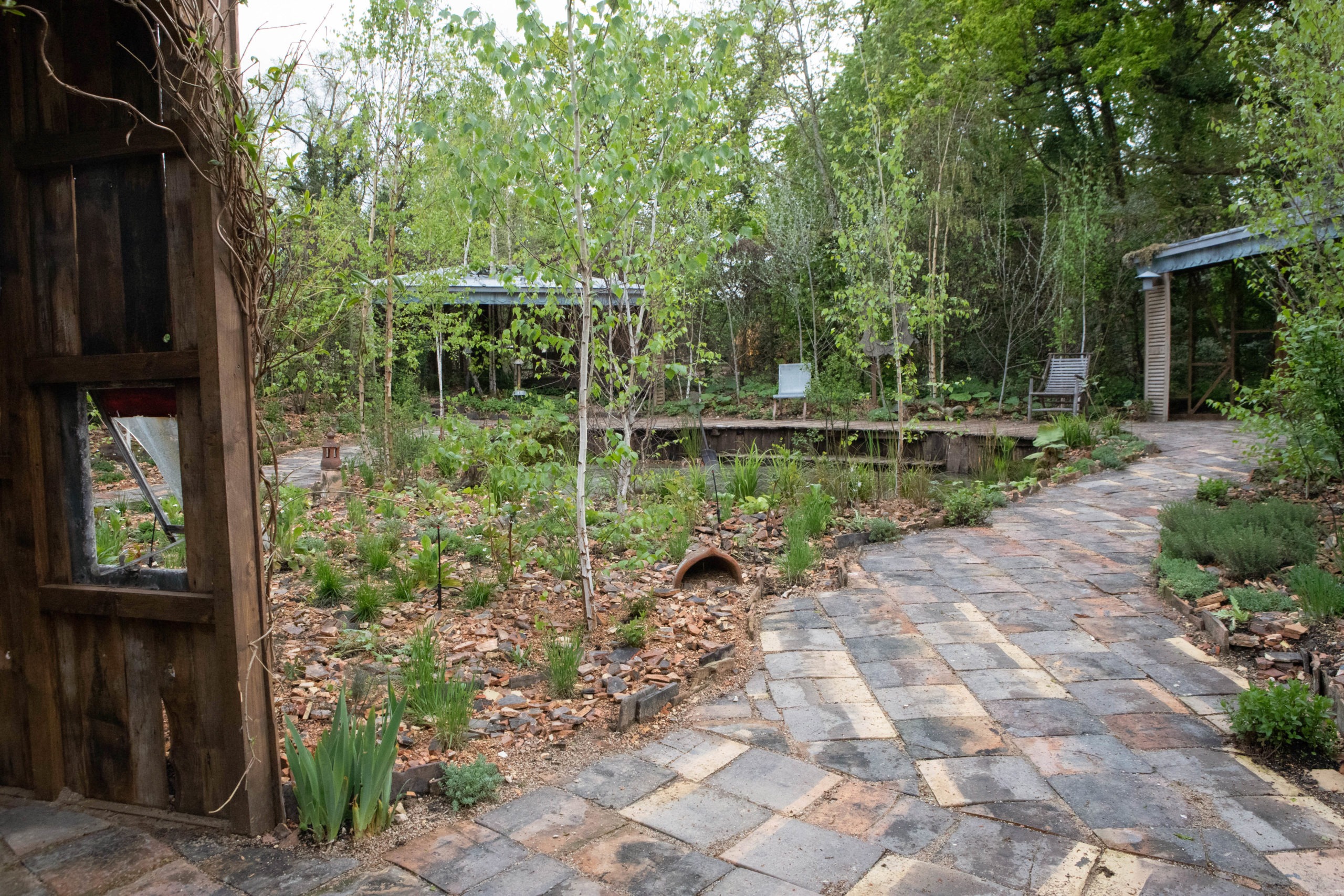
The plant species present in the garden were carefully selected to highlight the resiliency of the natural world. Most of the vegetation belongs to a category called “pioneer plants”, those which are the first to grow following a catastrophe or other external stressors. As visitors make their way along the garden path, they can observe how nature evolves and reclaims deserted, sterile, or overdeveloped areas.

The garden
The visitor enters through a dilapidated shack, outfitted with a zinc skylight, which represents the initial shock or trauma. Inside, materials in various states of disrepair create an ambiance that is dark and unsettling. There is no vegetation present, only metal dominates the space. With every step, the visitor is guided towards the light outside the abandoned abode, taking one of the side exits.
In the second phase, that of integration, the visitor follows a path lined with hornbeam hedge and metallic trunks. The first sign of vegetation is a carpet of moss emerging from a rocky soil. Slowly, the visitor will notice nature’s metamorphosis, as she grows and strives upwards. The moss turns into taller perennials, which in turn, become small pioneering bushes.
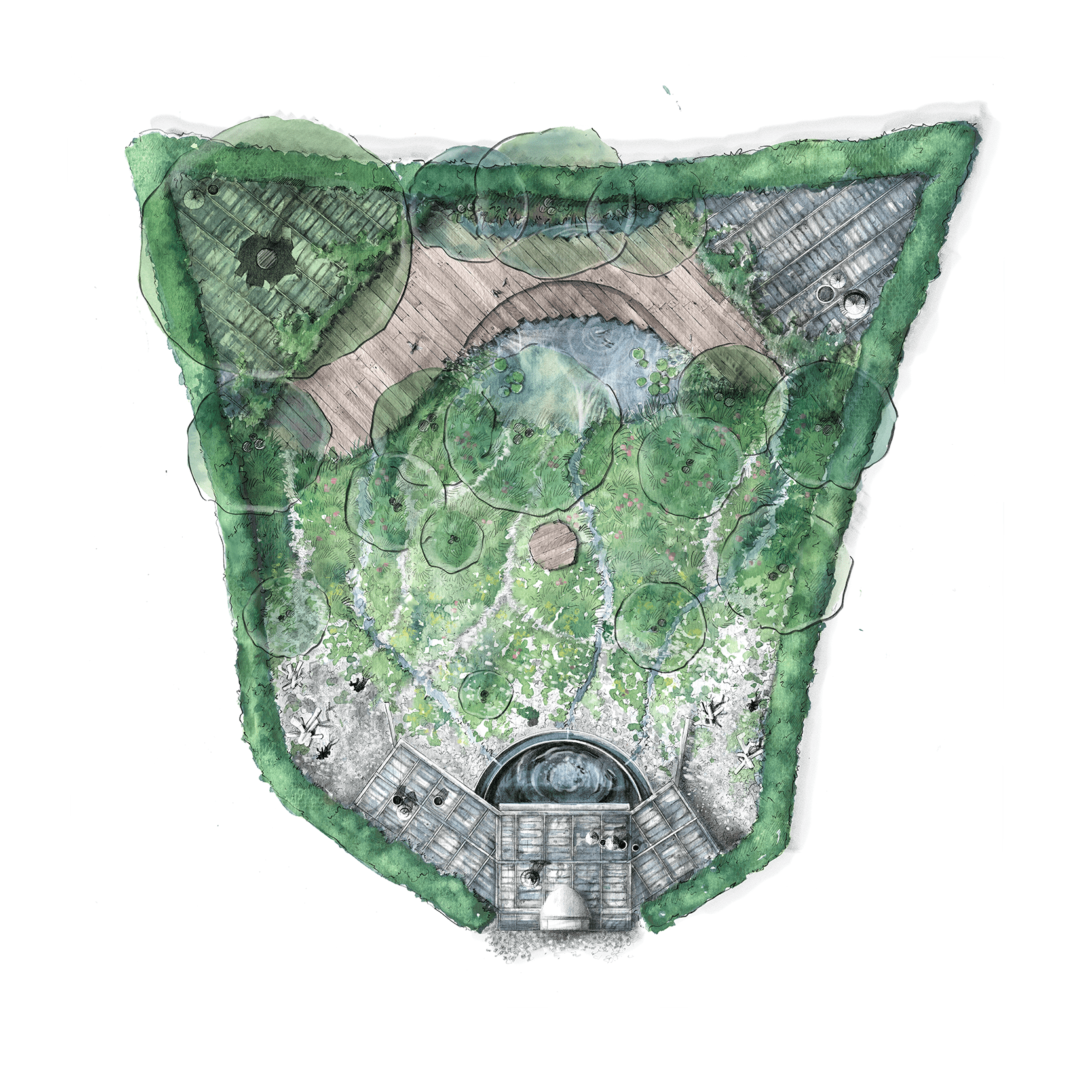
During the third phase, the visitor can start to observe the growth that can occur after trauma. Nature begins to overcome the metaphorical shock at the garden’s entrance. Plants take root deeper, stretch higher and even bust barriers, as evidenced by the birch tree that pierces through the roof of one of the cabins. These places of sanctuary offer the visitor a chance to sit and reflect on the process of resilience that both s/he and nature has experienced.
A sense of harmony settles in, as nature and man-made structures begin to co-exist. A wooden platform hovers over a central pond, inviting both literal and figurative reflection.
The visit comes to a close in the same shack through which the visitor entered. This reminds us of the cyclical nature of resilience, a journey we never truly finish. One can only step back on the path with the wisdom of past experiences so that tomorrow will indeed be better…
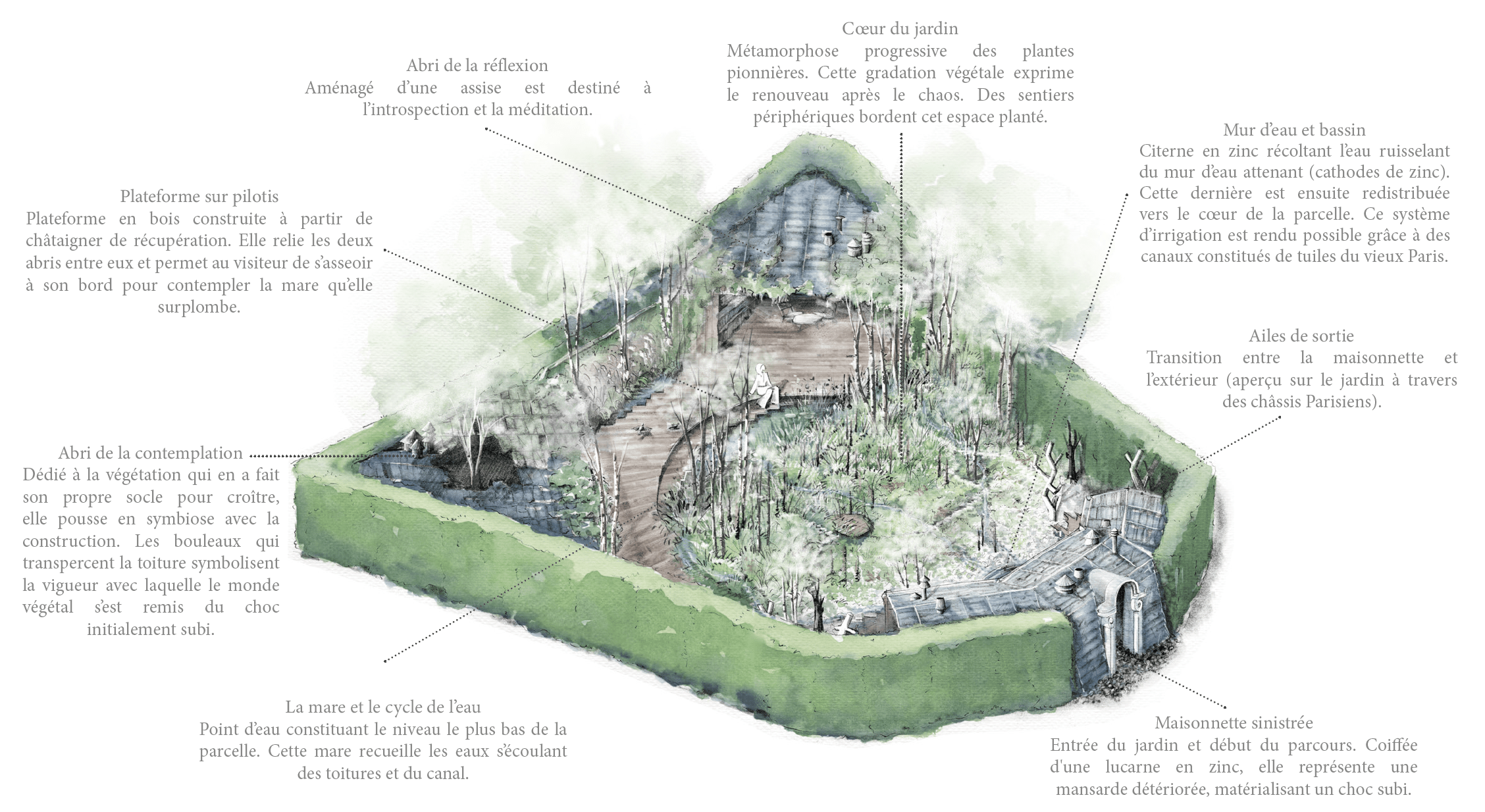
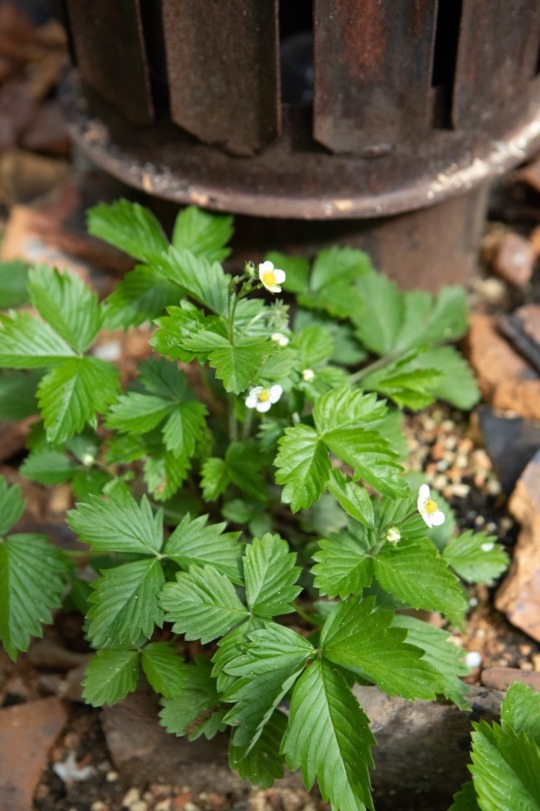
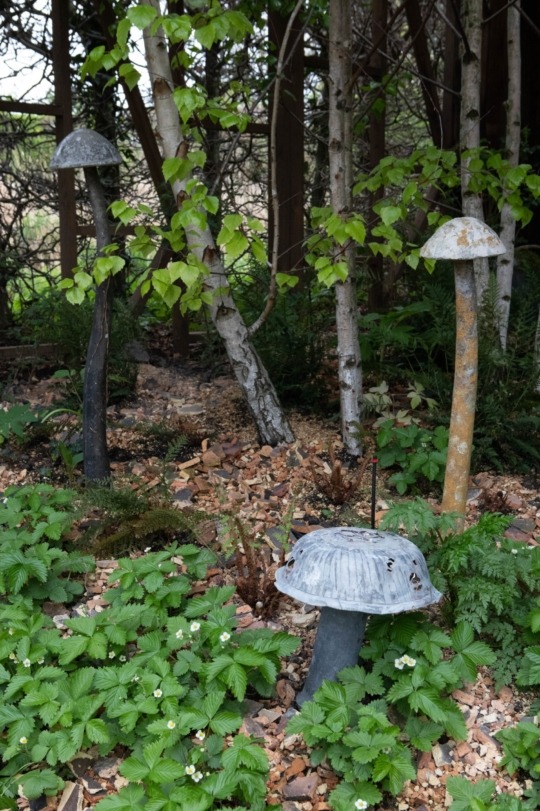
Plant list
TREES AND BUSHES
Betula pendula, Rubus fruticosus, Sambucus nigra, Rubus idaeus, Corylus avelana, Euonymus europaeus, Viburnum lantana, Buddleia …
PERENNIALS
Fragaria vesca, Verbascum thapsus, Daucus carota, Carex pendula, Angelica sylvestris, Papaver rhoeas, Digitalis purpurea, Campanula…
CLIMBING PLANTS AND OTHERS
Humulus lupulus, Rosier ‘Bobbies James’, Clematis vitalba Typha latilifolia, Caltha palustris, Equisetum hyemale….
Materials
ORIGINE AND HISTORY OF THE MATERIALS
It was very important to use recycled materials in the garden, as being resilient can also mean making the best out of what we already have at our disposal. Nearly 80% of the materials present in the garden are living their second life, having been carefully collected and stored by Francis Arsène over the past decades.
MATERIALS LIST
Structures : recycled sheets of zinc, zinc cathode (a residual substance obtained after electrolysis) roof decorations, rain gutters, chimney tops, zinc lanterns, Parisian roof frames, etc…
Surfaces : Chestnut tree wooden platform (31 years old), terra cotta shingles from historic Paris (over 100 years old)